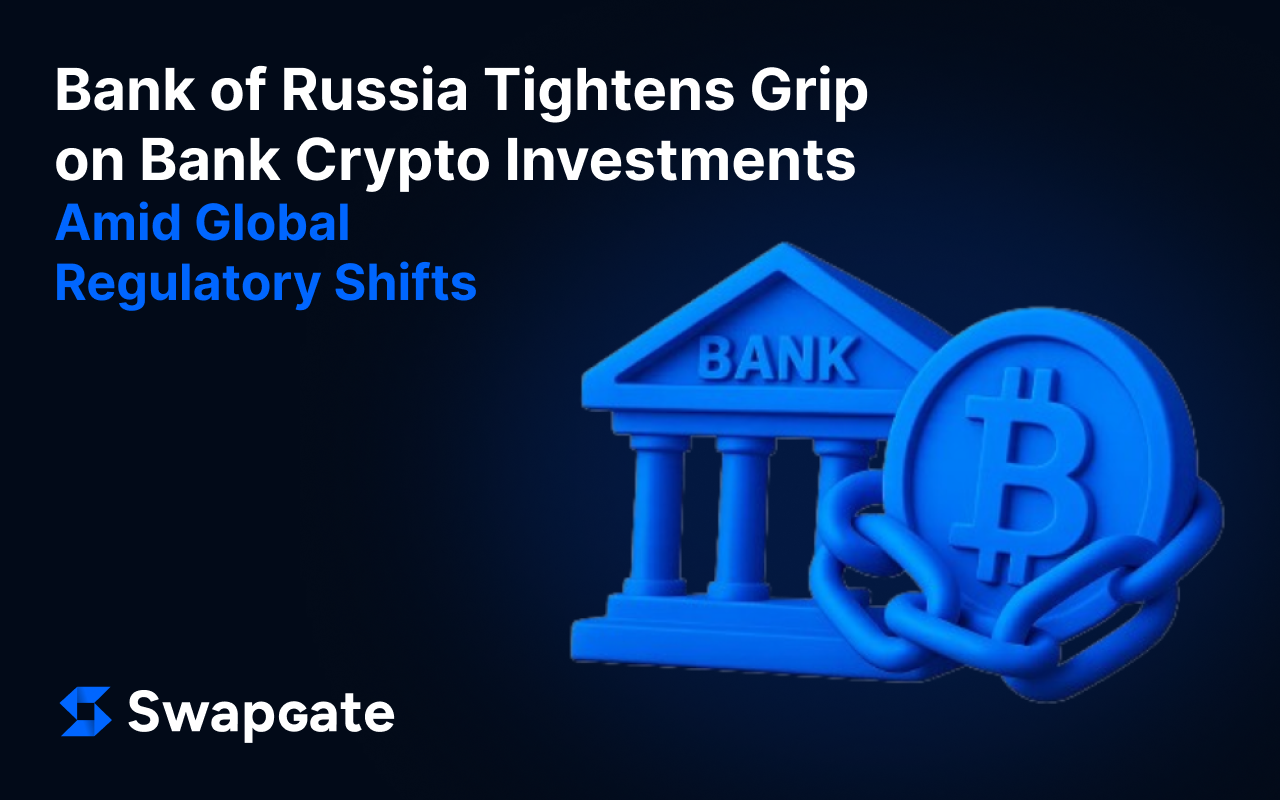
August 27, 2025, the Bank of Russia is stepping up its oversight of banks’ cryptocurrency investments, signaling a cautious yet evolving approach to digital assets. This move aims to strengthen control over financial institutions’ exposure to the volatile crypto market, reflecting a broader global trend toward stricter regulations. Amid rising concerns about financial stability and illicit activities, SwapGate offers a reliable platform for traders to monitor real-time exchange rates, such as BTC/USDT, ensuring they stay ahead in this shifting landscape.
The Bank of Russia’s decision follows a period of heightened scrutiny over how banks handle crypto-related risks. Officials are focusing on curbing excessive speculation and ensuring compliance with anti-money laundering (AML) standards.
This is happening against the backdrop of growing popularity of cryptocurrencies: the price of Bitcoin recently exceeded $115,000, and the price of Ethereum remains stable, but the market is under pressure due to regulatory uncertainty. The central bank’s initiative is part of a broader strategy to strike a balance between innovation and stability, a challenge that is also relevant to other countries reviewing their policies on cryptocurrencies.
Rising Regulatory Pressure
The Bank of Russia’s tighter controls build on its existing framework, which has long viewed cryptocurrencies with skepticism.
According to data, the volume of transactions involving Russian residents increased significantly in early 2025, prompting the regulator to tighten controls. Banks are now required to provide detailed reports on their crypto assets and conduct more thorough risk analysis, which may limit their direct involvement in this sector.
Banks are now required to report crypto holdings and assess risks more rigorously, a move that could limit their ability to engage directly with digital assets.
This stance aligns with global efforts to regulate crypto. In the U.S., the Federal Reserve’s recent decision to maintain rates between 4.25% and 4.50% has fueled debates about crypto’s role in a tightening economy. Meanwhile, Japan’s Finance Minister recently endorsed crypto investments, contrasting with Russia’s cautious approach.
Trending discussions on social platforms suggest a divide: some see regulation as a step toward legitimacy, while others fear it stifles innovation. The Bank of Russia’s actions appear to lean toward the former, prioritizing oversight over unrestricted growth.
Implications for the Crypto Market
The intensified scrutiny could reshape how Russian banks interact with cryptocurrencies. While direct investment might be curtailed, the central bank has hinted at allowing qualified investors access to crypto derivatives, a move seen in other markets like the U.S. and UK.
This suggests a phased approach, where banks act as gatekeepers rather than active participants. For retail investors, the impact may be indirect, with tighter controls potentially reducing liquidity on domestic platforms.
The global context adds complexity. Reports of Russia exploring crypto for cross-border trade, especially amid sanctions, have drawn international attention. The Bank of Russia’s focus on control could be a response to pressure from Western allies, who are cracking down on crypto networks used to bypass restrictions.
Yet, this also raises questions about the effectiveness of such measures, given the decentralized nature of blockchain technology. Critics argue that overly strict rules might push activity underground, a concern echoed in trending online debates.
Opportunities and Challenges
For crypto enthusiasts, this regulatory shift presents both opportunities and hurdles.
On one hand, clearer guidelines could attract institutional interest, stabilizing the market. On the other, banks facing stricter limits might reduce support for crypto services, impacting accessibility.
The Bank of Russia’s move also reflects a broader narrative of balancing innovation with security. While some nations embrace crypto as an economic driver, Russia’s approach underscores a preference for controlled integration. This could influence global standards, with implications for investors worldwide.
Trending sentiments suggest a mixed reception, with some viewing it as a pragmatic step and others as a missed chance to lead in crypto adoption.
Looking Ahead
As the Bank of Russia refines its policies, the crypto community watches closely. The central bank’s next steps — whether expanding the experimental regime for qualified investors or imposing further restrictions — will shape the market’s trajectory.
With global regulators like the U.S. and EU also tightening oversight, the industry faces a critical juncture. SwapGate’s live rate monitoring remains a key resource, helping traders navigate this evolving landscape.
In the end, the Bank of Russia’s tighter control highlights the ongoing tension between regulation and freedom in the crypto space. As policies solidify, staying informed and adaptable will be crucial for investors, making tools like SwapGate essential in this dynamic environment.